During the puppy socialization and manners classes I used to teach, the most common questions I would hear related to play.
Owners always wanted to know the same kinds of things:
- Is my puppy’s play appropriate?
- How do I know if my puppy is taking playtime too far?
- Is my puppy having fun?
We’ll try to answer these questions and explain the things that do and do not constitute appropriate dog play below.
First Things First: All Dogs Are Individuals
It’s important to understand that all dogs are individuals. They all have different personalities and interests, and this will manifest in different play styles.
Some dogs are really confident and exuberant players.
Others are shy or nervous.
Some dogs are quite vocal, while others are not. Some use their paws a lot when playing, yet others prefer to use their mouths more.
This is normal!
Dogs also recognize these differences, which means your dog may make friends with certain dogs but not others. I certainly don’t get along with every single person I meet, and your dog likely won’t either!
The Basics of Dog Play
Despite the fact that dogs obviously have fun while playing, play is also an important aspect of a dog’s maturation and well-being.
This means it is important for owners to understand the significance of dog play, as well as the hows and whys of the subject. We’ll try to explain some of the most important things to understand about dog play below.
Why Do Dogs Need to Play?
Dogs play because it helps them learn both social and motor skills.
It also helps them to build social relationships. In fact, dog play behavior is important for brain development and learning to interact with other dogs appropriately.
Additionally, play is a great way for dogs to blow off some steam, eliminate stress, and get some exercise.
Why Do Dogs Play Fight with Humans?
Dogs also learn appropriate play skills with humans.
Dogs are very social animals, and play is a big part of their interactions with us. And a lot of what makes up play between dogs, as well as dogs playing with humans, is play fighting.
Play fighting mimics many of the same behaviors real fighting does, such as biting and baring teeth, but playing dogs do so in relatively gentle fashion. They also employ lots of signals to indicate that it’s all in fun.
Playing with your dog can help to build a better bond, it gives your pupper an appropriate outlet to play appropriately, and it is an important part of your relationship with him.
Below is an example of dog/human play!
How Do Dogs Learn to Play?
Dogs learn by doing.
They learn to read the social cues of other canines, and dogs will often handicap themselves to play at the comfort level and ability of their partner.
For example, a large dog may lay down on the floor to be less threatening when playing with a smaller, younger or timider dog .
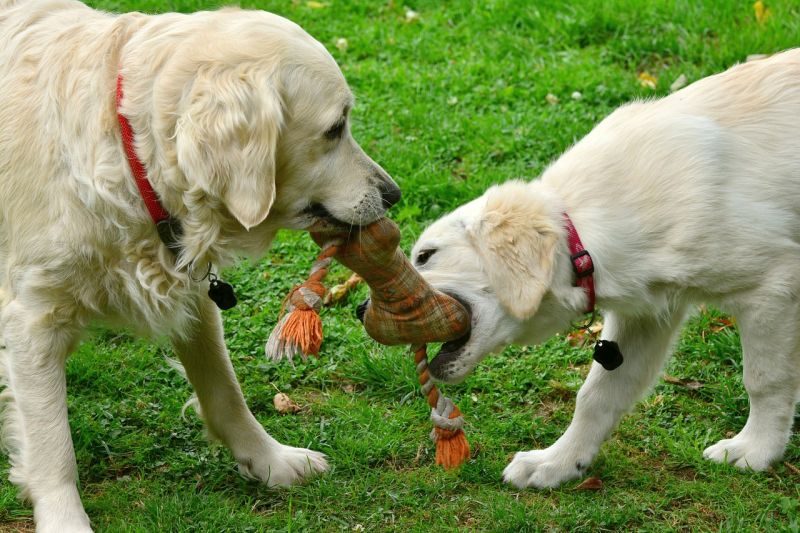
Dog Play Is Important, So Start While Your Pup Is Still Young
New puppies are born without much pre-loaded software, so to speak.
They have to learn a lot about the world, including everything from how to eat crunchy kibble to where they’re supposed to poop.
They must also learn a variety of social skills and norms, which they generally learn by playing with other dogs. This means that playtime isn’t just for fun — it also serves an important purpose.
Play teaches dogs the proper way to communicate, bond, and make social connections.
So, because playtime is such an important part of life for dogs, it is critical that you provide your pupper with plenty of opportunities to do so.
Puppy class is one of the best places for your new puppy to learn the appropriate social skills and cues involved with play, as well as the dos and don’ts of properly communicating.
Consequently, I suggest finding a positive puppy class that incorporates play into the curriculum. This will help your puppy engage with and learn from other puppies.
Examples of Appropriate Dog Play Behavior
It can be difficult for most people to tell what kind of play is appropriate and what kind is not.
General dog body language can tell us a lot about how a dog is feeling. A happy canine, who is enjoying a play session, will generally exhibit relaxed body posture and continue going back for more fun with his playmate
Just be sure that both pups are consenting to the play session.
If you are unsure, you can perform a quick consent test — just gently separate the puppies momentarily.
If both dogs try to reengage immediately, you can assume they are both consenting to the activity. But if one uses the opportunity to escape the situation, he’s probably not enjoying the play session and you should put a stop to it.
Dog play language is another great clue to consider when trying to ensure both dogs are enjoying their playtime.
Here are some of the things to look for:
- Meta-signals. Meta-signals are cues that dogs use to communicate how their behavior should be interpreted during play. I sometimes liken this to the “LOL” of the dog world. Because play mimics a lot of real offensive and defensive behaviors, meta-signals let a play partner know it’s all in fun. Common meta-signals are the play bow (bum in the air), bouncy movements, curling their body and turning their booty towards their play partner, and a relaxed semi-open mouth (akin to the look of a big goofy grin).
- Changing roles. This means the top player switches to his back allowing his partner to climb on top, or the chaser becomes the chasee. This is definitely something we want to see. However, do keep in mind that play doesn’t necessarily have to be a perfect balance to be fun and consensual for both partners.
- Self-handicapping. Dogs could easily hurt one another. They certainly have the ability to harm another dog if that was their true intention. But this is not something that happens during play. They learn how to regulate their ability and strength to meet the needs of their partner. This might mean inhibiting how hard they bite or toning down their play style to accommodate a smaller or younger partner.
- Stopping to shake. If arousal levels begin to skyrocket (and they often do), you will likely notice both dogs stop and ‘shake it off’. It looks similar to shaking off water. This diffuses the stress or could just mean the play session is winding down. It acts as a signal that he’s done playing for the moment.
- Mouthing and play biting. Because play mimics fighting in many ways, biting is a normal part of play behavior. The amount of pressure that is tolerated is learned early from the consequences of biting too hard or to rough. If he bites too hard, his play partner will be sure to let him know. Mouthing can also happen between puppies and their humans, so it is important to teach puppies that it is OK to bite toys but not fingers.
- Vocalizing. Some dogs vocalize quite a bit while they play, while others remain silent. I had a dog, Stewie, who would growl quite a lot while playing. But this only happened with familiar dogs. Some dogs also bark more than others when playing. It may also depend on the context of the play. My current dog, Juno, vocalizes when she is playing with me or by herself (she is quite a character), but she is perfectly quiet when playing with other dogs.
The video below shows some examples of normal dog play. Even though there is some mouthing and vocalization, this is all in the realm of normal dog play.
Examples of Inappropriate Dog Play Behavior
Inappropriate play behavior can occur for several different reasons.
Some dogs have not learned appropriate social skills as a puppy, while others are hard-wired to be pushy. At other times, a fun play session can suddenly escalate into something inappropriate.
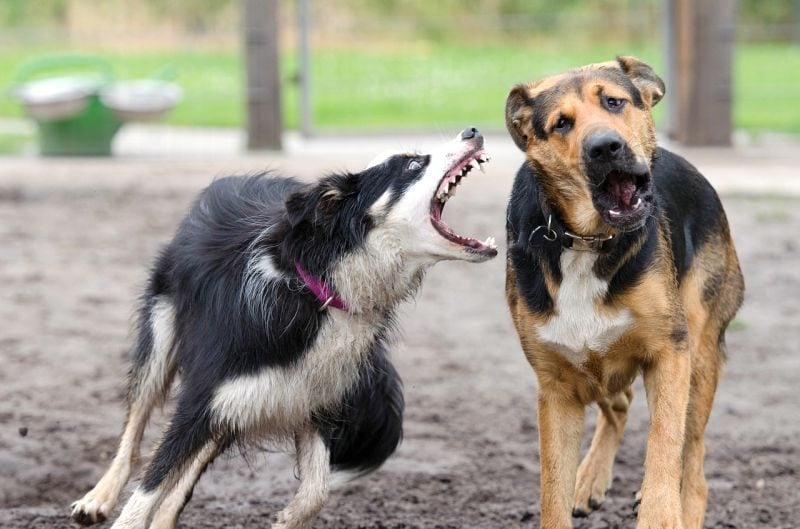
Some of the signs of inappropriate play include:
- Neck biting and holding during play. This is not generally a welcomed or appropriate type of bite during play, particularly if the aggressor grabs his playmate and won’t let go.
- When big dogs play too rough with little dogs. Large dogs with good social skills usually handicap themselves when playing with smaller dogs. This may include playing more gently with their playmate or laying on the ground in a more inviting position. However, some large dogs have not learned this skill and will play at the same level as they do with dogs of their own size. This can sometimes be too rough for a young or smaller dog, leaving the smaller pooch feeling overwhelmed.
- Escalating arousal levels. Dogs play fighting too much can potentially lead to a real fight when the arousal levels skyrocket and meta-signals are not present. Particularly if one member is feeling a bit overwhelmed or apprehensive to begin with.
- Body slamming. This is not a fun example of play for the recipient, and dogs generally consider body slamming to be quite rude.
- Pinning. Holding another dog by his neck on the floor using the mouth or pinning another dog to the ground with his body is scary for the dog being pinned.
- Standing with head over the neck and shoulders of their play partner. This position is rude and confrontational.
- Growling or baring teeth. This is tricky because we sometimes see these behaviors in normal play. But when it becomes serious, the growler is giving a warning for the other dog (or person) to back off. If the recipient isn’t good at reading body language and doesn’t head this warning, there is the potential that a bite or a fight could ensue.
- Barking in the face of another dog. This is not a polite way for dogs to interact with one another, to solicit play, or greet each other. Some dogs bark to demand attention or to police other dogs who are playing.
Early Warning Signs of Aggression
It is important to learn how to recognize the early warning signs of aggression, so you can take whatever steps are necessary to keep everyone safe and happy.
Early signs of aggression in puppies often take the form of bared teeth, growling, or lunging at others.
Aggression can sometimes occur between two play partners if signals are misinterpreted or ignored. Some warnings to look for might include:
- Continued relentless chasing or pestering, even when his play partner has given clear signals that they are no longer interested in playing.
- When rough play becomes too rough for one play partner. This doesn’t necessarily mean that your dog is being aggressive, but it could lead to an aggressive interaction. It will appear to be more one-sided, meaning one partner is much more involved and over-aroused than the other.
- Some puppies can be a bit of a bully. They may need more human-mediated interjection to make sure that they are being respectful. These rude interactions may be excessive body slamming, relentless chasing when the other dog is trying to escape or is giving clear ‘stop’ signals, or it could be a lack of bite inhibition despite repeated warnings. Just remember, the bully on the playground is often the child who lacks confidence and social skills, and your pup is no different.
Puppies who are nervous or anxious may also exhibit signs of aggression. If your puppy is showing signs of being fearful or anxious of people, other dogs, or things in their environment, or if he is showing signs of aggression, the best line of defense is to contact a professional behavior consultant to help you.
These aggressive reactions are abnormal, but normal play often mimics many of these behaviors. It can be difficult to identify what’s unusually aggressive and what is normal puppy play (which may be rough, especially when your pup is still learning what’s appropriate play and what is not).
So, don’t be alarmed if your puppy growls while playing tug or nips while playing with his friends. If his friends aren’t worried or hurt and they want to continue with play, this is a totally acceptable behavior.
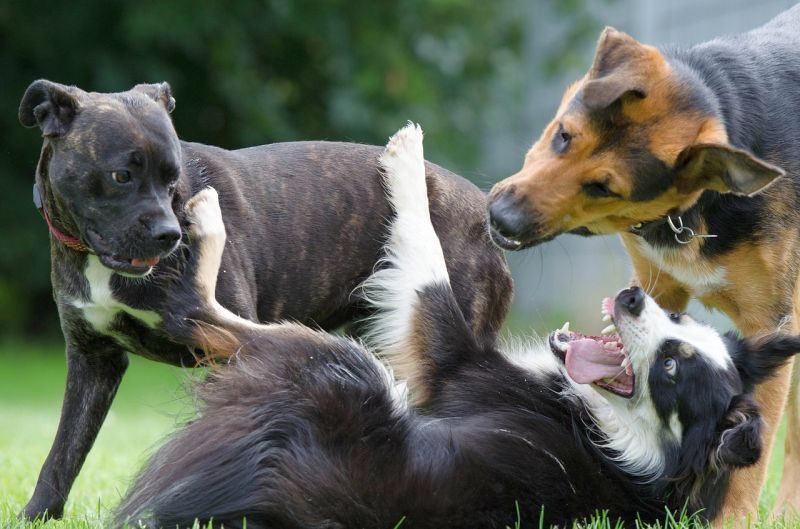
Learn about muzzle punches — one of the ways dogs can warn others to back off!
Do Different Breeds Play in Different Ways?
Different breeds of dogs have been selected over time for their different traits. Some of these traits can influence the way a dog plays.
Just remember, dogs all have unique personalities, and a dog’s breed only dictates a typical trait, not a definite one. Early socialization, confidence level, and the environment can also influence how he learns to play.
Because dogs have different play styles, in many cases dogs will partner up with others of a similar play style so that they’re on the same level.
This video below by Fenzi Dog Training show some examples of different doggie play styles:
A couple of examples of different typical breed-specific play styles:
German Shepherd Play Style
German shepherds tend to vocalize quite a bit while playing and sometimes tend to body slam their play partners.
However, German shepherds are also quite calm, in my experience, when compared to some other breeds (such as terriers, for example).
Border Collie Play Style
Border collies and other herding breeds tend to enjoy play that mimics their natural herding instincts of stalking and chasing. Sometimes they can become a bit intense for other dogs, and border collies occasionally get a bit nippy.
Border collie play sometimes also leads to barking, which can be unsettling for some dogs.
Boxer Play Style
Boxers are enthusiastic and energetic players. They often use their paws to play, which can sometimes be a bit too rough, especially for smaller dogs.
Boxers may also incorporate body slamming and chase into their play. They are great play partners when matched appropriately.
Sight Hound Play Style
Sight hounds, such as greyhounds and Afghan hounds, have been selected over the years for their ability to spot and chase prey.
Some prefer to not engage in play with other dogs and would rather engage in chase and pounce games, like the use of the flirt pole.
Labrador Retriever Play Style
Labs are generally boisterous and confident players. They are bouncy, silly, and enthusiastic!
A well socialized lab tends to play well with everyone, and they are generally good at adapting their play style to suit the needs of their partner.
Friendly Dog-Dog Interactions: How Can You Encourage Your Dog to Play Nicely with Others?
My first piece of advice is start early.
Find a good puppy socialization class that provides a positive and safe learning environment. Also, be sure to praise and reward your puppy when he acts appropriately.
The dog park may not be an ideal place to take your puppy, as he may end up having a bad experience with another under socialized or inexperienced dog.
Here are some additional things to consider when setting up play sessions for your pupper:
Play dates are a great idea.
Dogs who are already friends and have compatible play styles may have a fun time enjoying an off-leash walk at the beach or the park. Just be sure to be careful if any unfamiliar dogs try to join in the fun.
When introducing dogs, avoid on-leash greetings.
Though necessary for safety, leashes restrict movement and body communication. So, try to allow dogs to meet sans leash and avoid on-leash dog greetings whenever you can.
A polite greeting in the dog world should involve nose-to-bum interaction. It should not involve running towards another dog full tilt or putting his face directly into the face of another dog.
Play will generally start with the question “would you like to play?” in the form of a meta-signal, such as a play bow.
Try to make introductions in a neutral and safe space.
This essentially means making introductions at an enclosed dog park or similar place, rather than in one of the dog’s homes. By doing so, you’ll increase the chances of a positive encounter.
Additionally, be sure to supervise the puppers, and ensure that the play session is going well.
Teach your dog to come when called.
Teaching your dog to come to you in every situation means that you can avoid having to physically separate dogs if arousal levels escalate.
The same advice goes with dogs and people, though if you are introducing your puppy to a new baby, a leash or baby gate is an ideal way to keep everyone safe.
Having new people play with your puppy is a great way to help him to feel positive about strangers, provided it’s safe and positive for everyone.
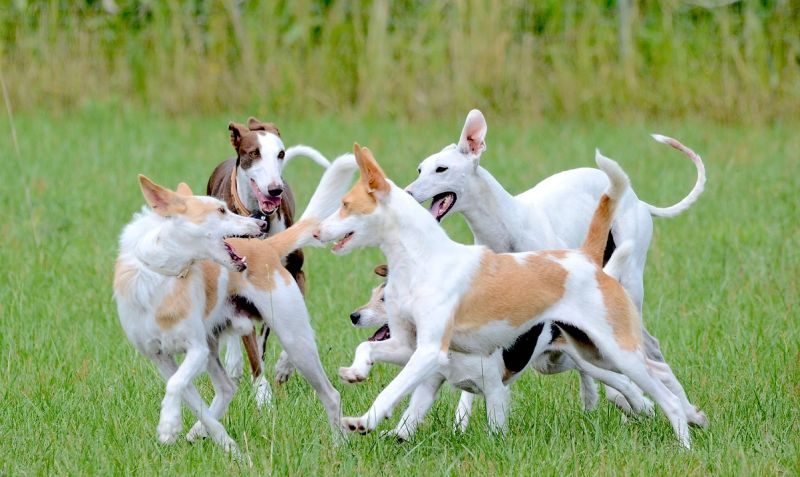
Dog Play Vs. Puppy Play: What Are the Differences?
Is it OK to allow your new puppy to play with older dogs? New puppies are small, and old dogs may not be interested in a puppy’s antics.
It is usually acceptable to allow young and old dogs to play together, but there are several things you’ll want to watch out for.
Below, we explain a few of the most common archetypal interactions dogs exhibit.
- Siblings who fight: Bullying and aggression between sibling puppies who are adopted together seems to happen more often than between unrelated dogs. This is just one symptom of ‘Littermate Syndrome’. It is ideal to avoid adopting siblings together to prevent this from happening. A good rule of thumb for anyone looking to adopt a new puppy is one dog at a time! If you’re not careful, you can end up living with two dogs who don’t get along, which is do-able, but certainly a huge hassle.
- Puppies play fighting with older dogs. Older dogs can be great teachers for young puppies. Older dogs can be a good influence if they are socially appropriate and enjoy the interaction. Make sure that your older dog has a safe zone he can escape to if he begins to feel annoyed or tired of playing.
- Puppy plays too rough with older dog. Senior dogs often don’t have the same vigor or desire to roughhouse that young puppies do. Puppies need to learn when and where play is appropriate, how to self handicap and how to have some impulse control. Older dogs are good a teaching these lessons but shouldn’t have to put up with relentless puppy antics if they are not up for it. Puppies tend to nip when they get excited, and some older dogs are less tolerant of this. Watch for signs that your older dog has had enough or that your younger dog isn’t being too overbearing. It’s best to step in early and prevent outbursts from happening, rather than get into a situation where you’re constantly struggling to stop family dogs from fighting in a household.
***
Play is important for the development of puppies into socially appropriate adults. So, remember to allow your puppy the opportunity to learn these skills early.
Does your dog have some fun play partners? We’d love to hear about them! Share your experiences in the comments below.
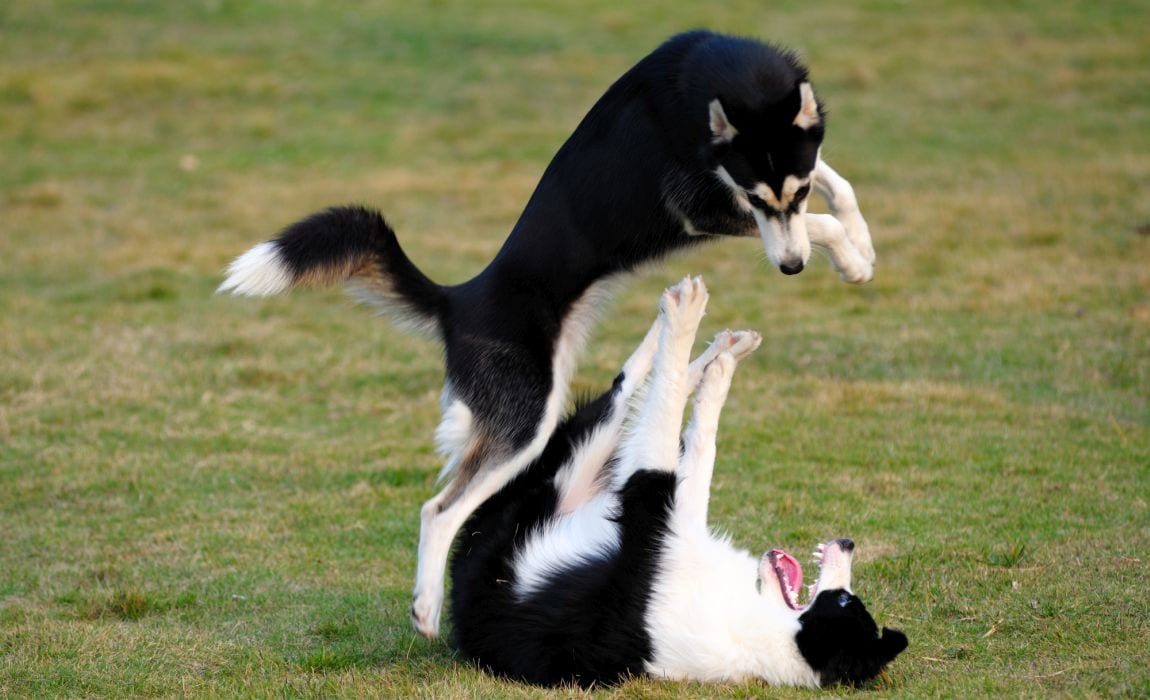

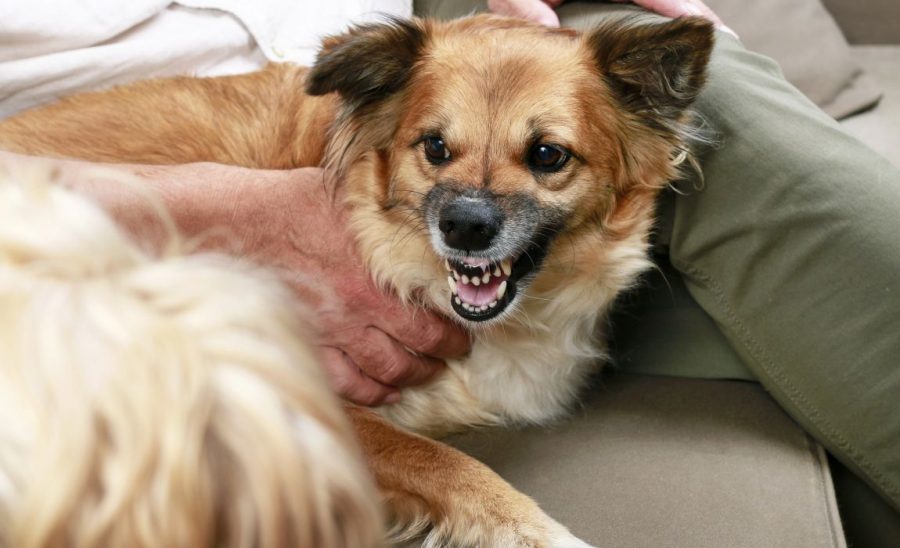


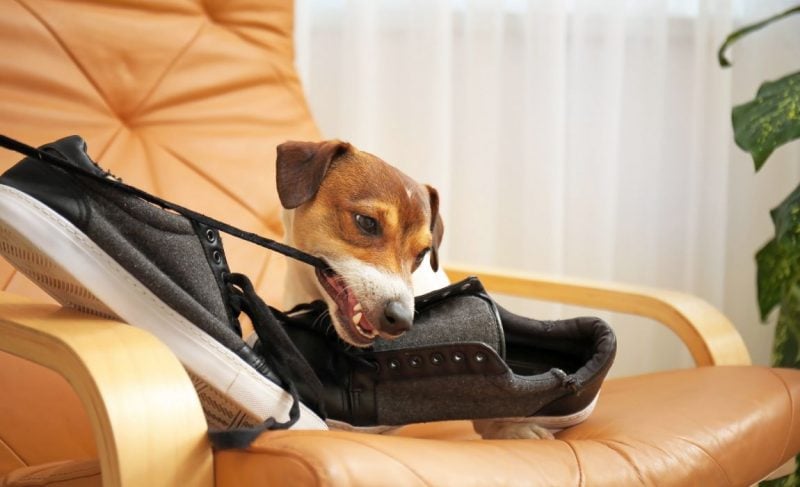
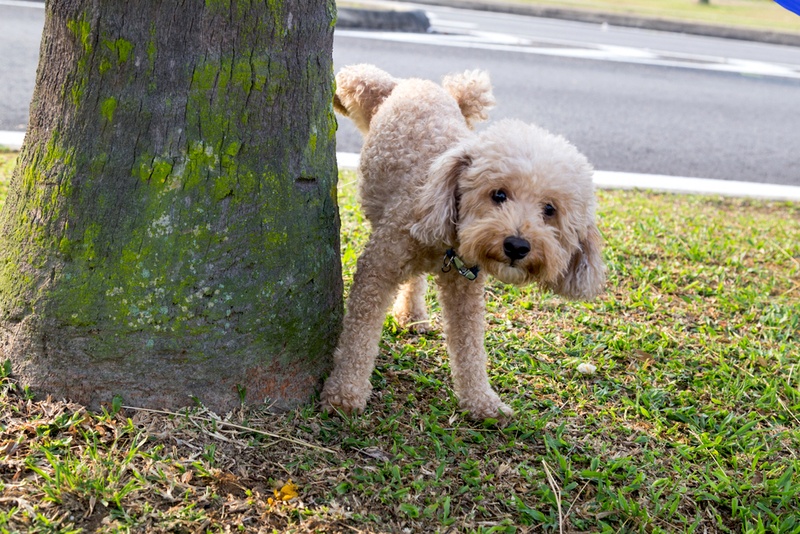
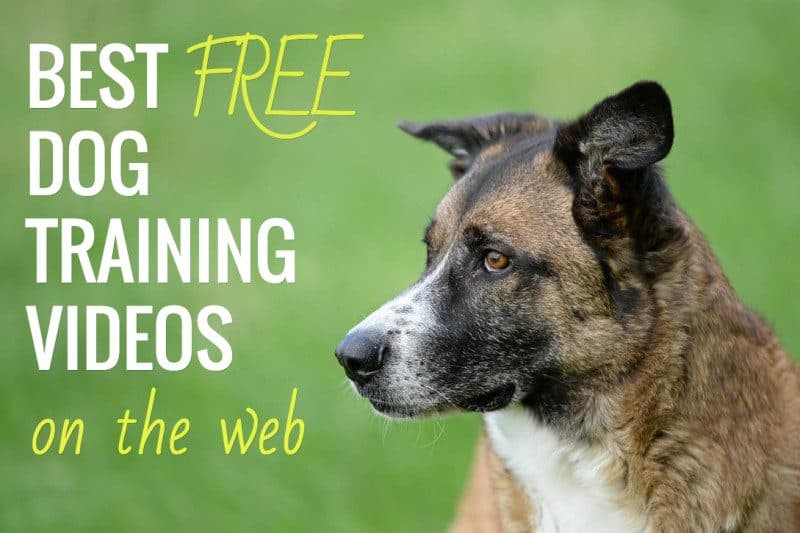
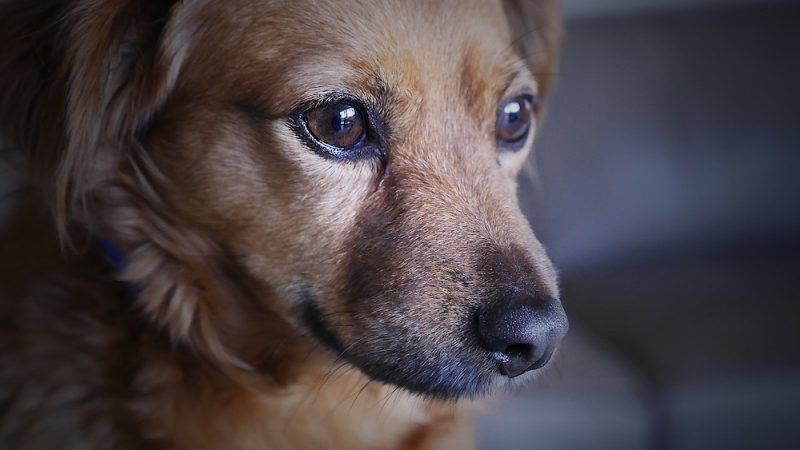
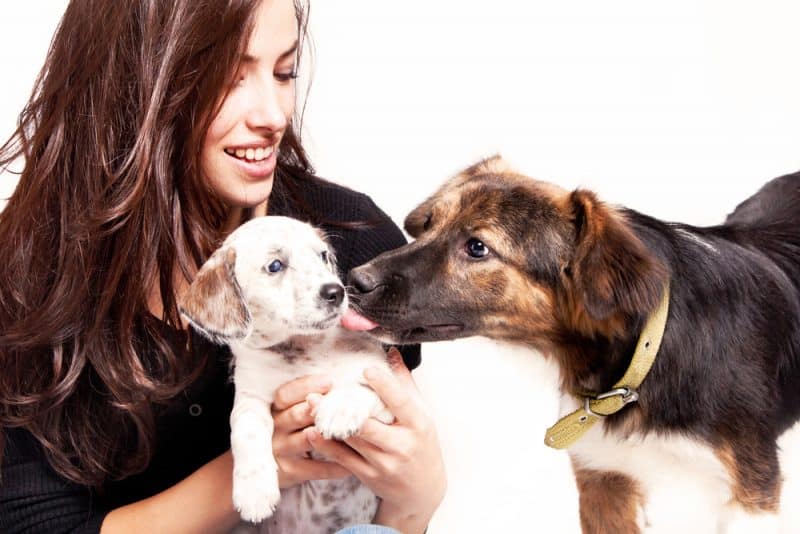
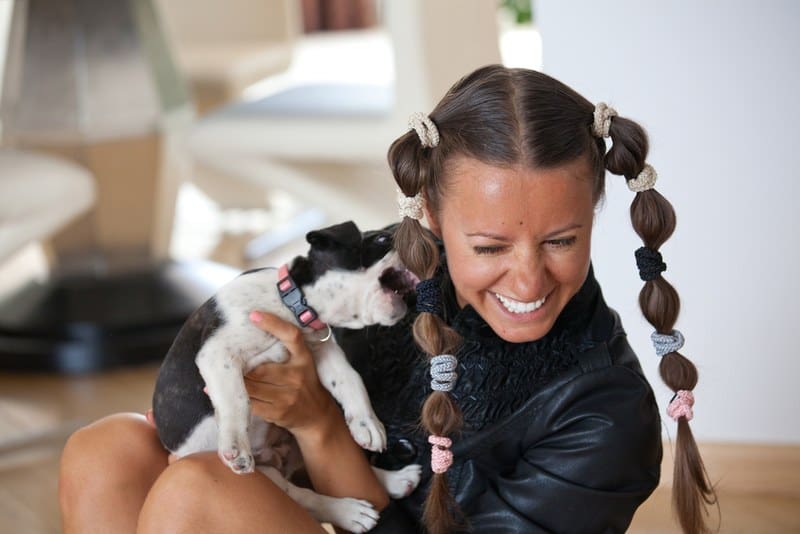
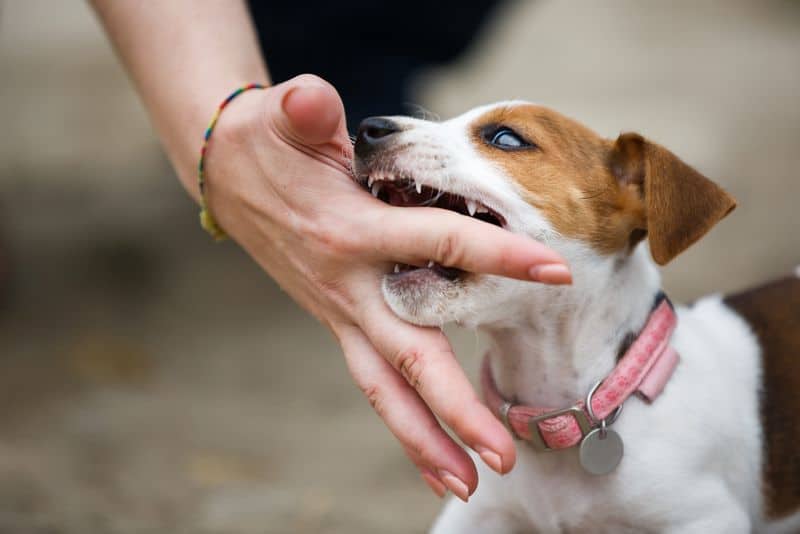

Leave a Comment